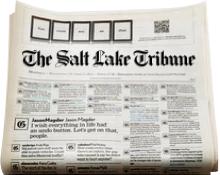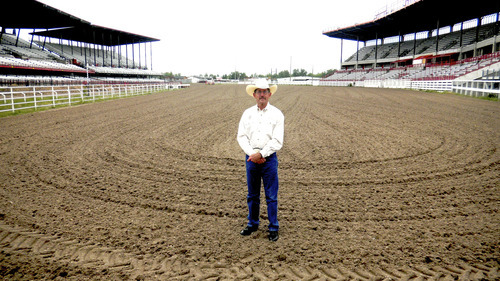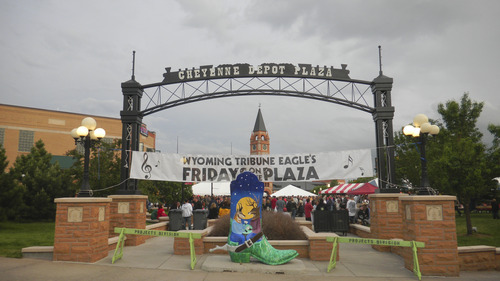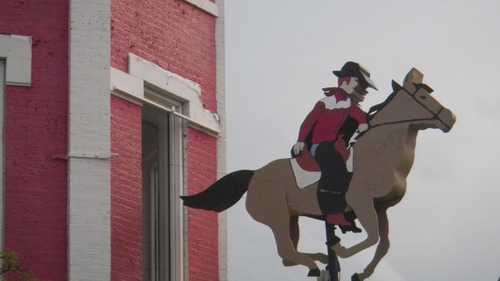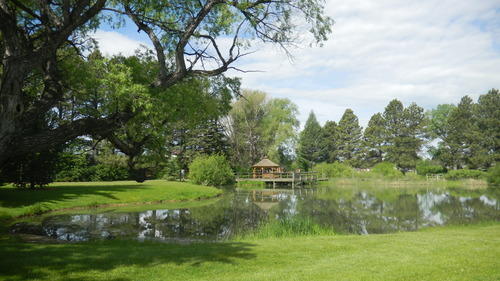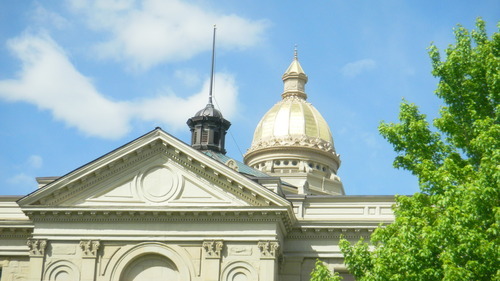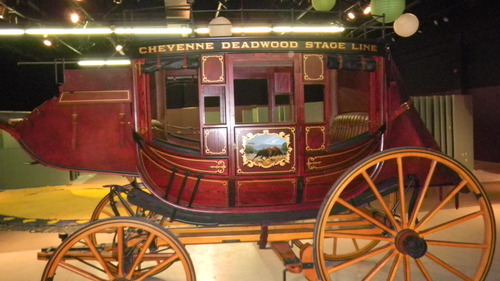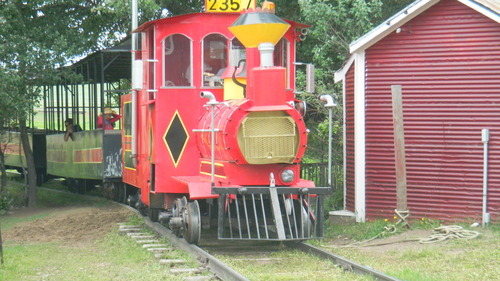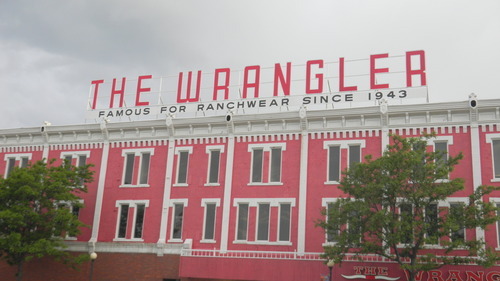This is an archived article that was published on sltrib.com in 2011, and information in the article may be outdated. It is provided only for personal research purposes and may not be reprinted.
Cheyenne, Wyo. • The romantic days when steam engines chugged across North America, cowboys ruled the range, electricity was still new and the idea of women holding political office or even voting seemed radical may have passed in most of the United States.
But Cheyenne, the state capital of Wyoming named after an Algonquin Indian tribe that once roamed the area known as the Shey 'an 'nah, celebrates its unique American history in many ways.
This city of 56,915 residents is a place where horses still occasionally wander through the lobby of the 100-year-old Plains Hotel, where thousands of rodeo fans double the town's population during the late July Frontier Days for the world's largest Western celebration and where 8-foot-tall decorated cowboy boots mark many of the area's most important landmarks.
The Plains once was the home of the Legislature, and retains the look of an elegant turn of the century hotel. From paintings of Chief Little Shield who cleaned up at the horse trough across the street before coming to Frontier Days in 1915 to Peacock Alley, where cowboys tried to impress flight attendants who once studied at a United Airlines school in the area to the cowboy meat loaf at the Capitol Grille, the place oozes history. Presidents John F. Kennedy, Teddy Roosevelt, Harry Truman and Ronald Reagan all visited here.
Frank Harris, general manager of Cheyenne's Little America Hotel who has lived in some of the country's biggest cities, said the thing that impresses him most about Cheyenne is the genuineness of its citizens. He quietly pointed to Wyoming Gov. Matt Meads in the buffet line at the hotel restaurant. Mead sat quietly with a single aide in the restaurant, hardly bothered by anyone.
Val Martin, a veteran Cheyenne Trolley driver who introduces visitors to Cheyenne with daily rides through the city, proudly tells stories of how women held power in Wyoming long before other places in the U.S.
Before Wyoming was even a state, its first territorial assembly granted women equal voting rights in 1869, a fact that almost cost it statehood and required 23 more years to join the Union. Its women were the first to serve on juries and to be elected as mayors and state officials. Martin proudly pointed to a statue of Wyoming's Nellie Tayloe Ross, who served as governor from 1925 to 1927, the first woman to hold such a high office in the United States.
Cheyenne celebrated other firsts.
It was one of the first cities to have electricity and electric street lamps as early as 1882. One of first county libraries in the West opened here in 1886.
At one time in the late 1800s during a cattle boom, Cheyenne and the surrounding area was believed to be the richest per capita county in the United States. Many of that time's historic homes are preserved to this day. For example, travelers seeking a historic bed and breakfast experience can stay in the Nagle Warren Mansion that was constructed in 1888 near the heart of downtown.
One of the reasons Cheyenne exists was because of the railroad and the city still celebrates that fact in a major way. About 80 trains still come through town each day and train buffs can watch them near the old Union Pacific Depot in the heart of town, a place that also is home to an excellent railroad museum. Historic steam engines can be found in parks throughout the town.
But nothing symbolizes Cheyenne's connections to the Old West quite like it's many cowboy traditions. Whether taking a train ride to view bison at the Terry Bison Ranch on the outskirts of town, watching the Cheyenne Gunslingers skits and shows in downtown in June and July, visiting numerous Western history museums scattered through the town or enjoying bronze statues of bucking broncos and cowboys riding bulls, the town's motto "Live the Legend" holds true.
This is especially true during Frontier Days, the world's largest outdoor rodeo and Western celebration that marks its 115th year July 22 through 31 this year. That's an ideal time for Wasatch Front residents who want to make the eight-hour journey to Cheyenne to experience a real Western event.
The grounds are quiet and almost empty on a quiet Friday afternoon in June when Bill Daniels, who looks every bit a cowboy in a new white hat and pressed western suit, stands in the middle of the huge arena.
Things will be busier the next morning when some of the 2,700 volunteers needed to make Frontier Days work do chores around the beautiful outdoor stadium. For now, Daniels tells stories about the grounds.
He tells the history of the rodeo, which began in 1897, and shows how the Cheyenne chute that opens from the side became a rodeo staple. The arena hosts rodeos drawing upward of 15,000 people during the day and then transforms into a night concert area where singer George Strait once drew 24,000. This year's lists of performers include Sheryl Crow, Kid Rock, Toby Keith, Mötley Crüe, the Charlie Daniels Band, the Zak Brown Band and Darius Rucker. The U.S. Air Force Thunderbirds have performed at Frontier Days every year since 1953 and will do so again this year.
Daniels shows off the Indian Village where tribes from the area come to dance, cook and sell their wares to visitors as well as Wild Horse Gulch, a model of an old Western town where actors and vendors mix with visitors. He tells where the big midway carnival is located and talks about the downtown free pancake breakfast where volunteers feed as many as 15,000 people pancakes, ham, juice and coffee for free three mornings during the event.
There are four parades, many of them utilizing some of the historic carriages that can be seen year-round at the Cheyenne Frontier Days Old West Museum, whose art, memorabilia and children's areas celebrate the West and rodeo's roots.
"This is the great rodeo arena of the West," said Daniels, who will take as many as 500 people at a time on the free behind the chutes tour during Frontier Days. "It is 700 feet long and 200 feet wide, three times the length of most arenas."
Dan Cheney, a former competitor on the University of Wyoming rodeo team and now the chief operating officer of Frontier Days, said that people from all 50 states and 10 foreign countries attended the event last year on the 80-acre grounds. He said the event is designed to give people a glimpse of Western heritage and culture, immersing them in a whole Western experience.
In short, Cheyenne feeds on its railroad, cowboy and political history, celebrating its past with museums of events.
wharton@sltrib.com 1. Attend Frontier Days • The world's largest outdoor rodeo and Western celebration that started in 1897. It is scheduled for July 22-31. The Cheyenne Frontier Days Old West and Museum and Store, open year-round, offers rodeo history, carriage displays, interactive kids exhibits and Western art.
2. Bit-O-Wyo Ranch • Offers scenic trail rides and horse barn dinner and dances on Saturday nights.
3. Cheyenne Depot and Depot Museum • At the old Union Pacific Depot that was built in 1886. National historic landmark features railroad history museum, visitor center and restaurant.
4. The Terry Bison Ranch • Located on 30,000 acres of hills just outside of Cheyenne and features a train that allows families to get close to bison, horseback riding, a small kids' amusement park, old-time photo studio, private fishing pond and a gift shop as well as a Western restaurant and saloon, RV parks, cabins and bunkhouse rooms.
5. Western shopping • A major attraction with a number of Western-wear stores offering boots, riding shirts and hats. These include Corral West Ranchwear, All-Around Western Superstore, The Wrangler and Just Dandy.
6. Visit the Big Boy Steam Engine in Holliday Park • Big Boy is one of eight remaining locomotives on display in the U.S. and pulled a 3,600-ton train over steep grades between Cheyenne and Ogden.
7. The Nelson Museum of the West • Dedicated to the preservation of cowboy and American-Indian objects, as well as fine Western art. The 18,000-square-foot museum contains more than 3,700 artifacts, including a military history area.
8. Wyoming Capitol • The national historic landmark was built in 1887. The nearby Wyoming State Museum houses artifacts and collections showcasing Wyoming's history, including a kids' room and gift shop with a good selection of Wyoming books.
9. Riding the Cheyenne Street Railway Trolley • Or taking an evening carriage ride is a good way to learn about the area's history. Ghost tours in October and Christmas Light tours in December are popular.
10. Lions Park • It includes the Cheyenne Botanic Gardens with its solar-powered conservatory, discovery pond and educational wetland area. The Paul Smith Children's Village offers all sorts of fun educational activities for kids including a teepee village, story circles and places to wade. The park has one of the largest ponds in Cheyenne, lots of open space and is the home of Engine 1242, the oldest train engine in Wyoming.
Source: Cheyenne Area Convention & Visitors Bureau
